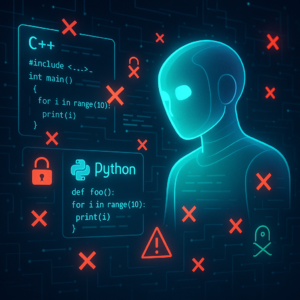Unlocking the Future of Teaching: How Generative AI is Transforming Data Analytics Education

Unlocking the Future of Teaching: How Generative AI is Transforming Data Analytics Education
Imagine the traditional classroom—rows of students, a teacher at the front, textbooks open, and the lecturer guiding the learning journey. Now, flip that image on its head. Robots as tutors, students as teachers, and artificial intelligence as a classroom centerpiece. Sounds like science fiction? Welcome to the near-future reality being sketched out by Professor Robert L. Bray in his innovative tutorial on integrating Generative AI into data analytics education.
The AI Classroom Revolution
Bray’s exploration into the world of Large Language Models (LLMs) like ChatGPT offers a fresh perspective on modern education. When ChatGPT hit the scene in late 2022, it had an unexpected impact—suddenly, Bray’s well-crafted MBA data analytics course, previously reliant on R and spreadsheets, felt outdated. But instead of despair, he saw an opportunity: What if students could use AI as an interactive assistant, converting a challenging curriculum into engaging AI-facilitated learning?
From Challenges to Opportunities
Rethinking Assignments with AI
One of Bray’s standout innovations is the transformation of homework into AI tutoring sessions. Instead of grinding through problem sets, students now engage with AI tutors. Imagine the chatbot doing the heavy lifting of explaining complex concepts and guiding through coding exercises, while students upload their chat logs as homework submissions. This doesn’t just lighten the cognitive load—it also boosts satisfaction and engagement, transforming homework from a chore into a dynamic learning experience.
Programming in English: The New Paradigm
A compelling technique championed by Bray is Programming in English (PIE). Imagine describing the task you want your code to perform using plain English, and having AI translate it into the correct programming syntax. This shift from syntax-driven to semantics-driven programming democratizes data science, leveling the playing field for students who may not have a strong technical background but possess sharp business insights.
AI Game-Changer: The In-Class Experience
Bray didn’t stop at reimagining homework. By using AI as a classroom partner, instructors can reallocate precious class time from rote coding exercises to more enriching activities—like interactive AI experiences. Elliptically, AI can simulate real-world challenges or new instructional techniques, like splitting a class into groups that teach different material using chatbot-facilitated peer instruction. Students teach the bot, transforming their understanding into clear, teachable concepts.
Practical Implications of AI in Education
Enhancing Participation and Collaboration
In group settings, AI acts both as an equalizer and a conversation starter. Students with wider participation for homework tasks result in lively discussions and collaborations, as Bray discovered. Collectively, students not only troubleshoot using AI but also learn to leverage tools like ChatGPT to explain each other’s code and ideas, fostering a communal learning environment.
Bridging the Gap Between Business Insight and Technical Skills
Bray asserts that with tools like ChatGPT, MBAs could surpass seasoned data scientists. How? By focusing on business insight over pure technical skills. When LLMs handle the repetitive coding tasks, learners can concentrate on identifying the most impactful questions and interpreting the results in ways that matter to businesses.
Key Takeaways
- Transformative Power of AI in Education: ChatGPT and similar AI tools are revolutionizing education by turning traditional teaching models on their heads, allowing for more creativity and engagement in learning.
- Reimagining Homework and Assessments: AI not only assists with problem-solving but also elevates how we learn, making education an interactive dialogue rather than a passive reception.
- From Syntax to Semantics: Programming in English simplifies coding, making advanced data analytics more accessible and widening participation among less technically inclined students.
- In-Class Dynamics Redefined: AI-driven activities foster an environment where students teach and learn collaboratively, making class time more engaging and productive.
- Broader Implications for Business Education: Empowered by AI, future business leaders can focus on insight and innovation rather than technical minutiae, fundamentally altering the landscape of data analytics.
In this rapidly evolving landscape, adopting generative AI in education is not just a novelty—it’s a necessity. Racing towards an AI-integrated future in the classroom, instructors can enrich the learning ecosystem and prepare students more effectively for the challenges of tomorrow. As Bray’s exploration has shown, by opening doors to new methodologies and approaches, educators can invigorate the learning experience and captivate the next generation of curious minds.
If you are looking to improve your prompting skills and haven’t already, check out our free Advanced Prompt Engineering course.
This blog post is based on the research article “A Tutorial on Teaching Data Analytics with Generative AI” by Authors: Robert L. Bray. You can find the original article here.




